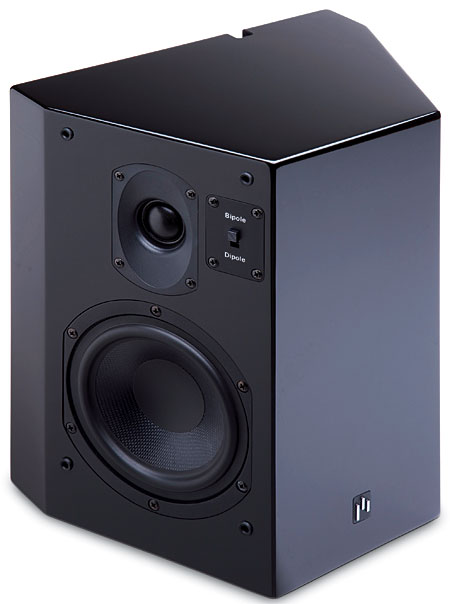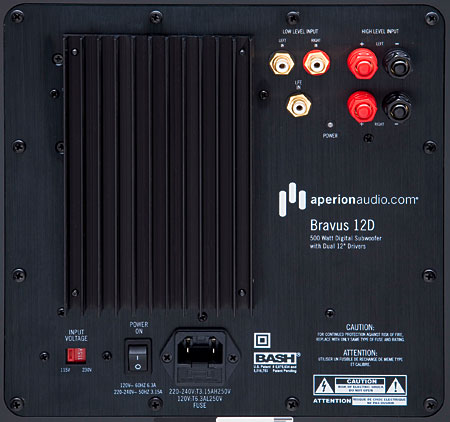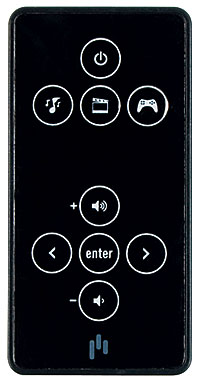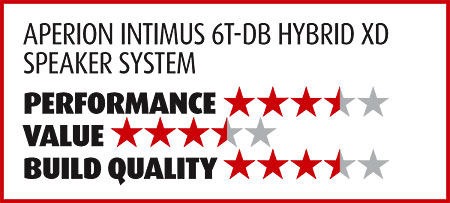Aperion Intimus 6T-DB Hybrid XD Speaker System Page 2

A Comfortable Pair
Many concert videos bypass the two-channel LPCM track in favor of a multichannel Dolby TrueHD one. This is a pity if you’ve heavily invested in a pair of stereo speakers. John Mayer’s Where the Light Is: John Mayer Live in Los Angeles offers both options. Maybe it’s having two of them that does it for me, but “Daughters” is my favorite song of Mayer’s. On the opening acoustic set, the song sounds incredible in either mode. In particular, pay attention to the immensely talented Robbie McIntosh’s resonator guitar playing. McIntosh’s own Emotional Bends CD holds a very special place in my CD collection. The Intimus 6T’s silk-dome tweeter very sweetly revealed the harmonic flourishes McIntosh adds to the song’s opening bars. The lower midrange and upper-bass presentation that captured his resonator guitar also nicely complemented the airiness of the highs.
After the acoustic set, Mayer rocks out with his trio. That eight years he spent locked in his room playing guitar by himself turned him into an incredible player. The whole trio sounds as full as any big band Lyle Lovett ever put together. Keeping it real in two channels, bass was very good but not necessarily quite as forceful as some larger, more expensive floorstanders could reproduce. Still, I defined the Intimus 6T as a large (full-range) speaker in my receiver’s system configuration. This forcibly bypassed the subwoofer whenever I selected two channels. I did this because I think the Intimus 6T deserves to be treated as a true audiophile speaker in every area that counts. And that includes how it deals with the inevitable compromise in the bass.
When the trio covers Jimi Hendrix’s “Wait Until Tomorrow,” Pino Palladino’s bass part is strong and driven. The Intimus 6T projected good depth and volume. But if I had to nitpick, I’d say that in the bass in the very lowest regions the speaker could cover was a trace muddled, less forceful, and even prone to some overhang. Still, I greatly appreciated the fact that Aperion didn’t sound like it was trying to cover up with a midbass hump. That would be unforgivable.

The Intimus 6T has some limitations that I didn’t notice as often with movies as I did with straight-up music. When I played music too loud, they could show their price-conscious roots. For instance, when I cranked them past their comfort zone on the Mayer concert Blu-ray, they started sputtering and spitting like a confronted Barney Frank in the No Spin Zone. Once I backed down the volume, I also backed out all misbehavior, and the Intimus 6T returned to its very enjoyable voice.
Space Boots
Aboard the Icarus 2 in the film Sunshine, the sound of space is best reproduced with a subwoofer driver the size of one of our smaller planets, like Mercury (according to director Danny Boyle). While the Bravus 12D’s dual 12-inch drivers don’t approach Mercury’s mass, they did a credible job of replicating the rumble of the ship’s engine when I cranked them up. And the Bravus 12D didn’t otherwise misbehave no matter what I threw at it. The Bravus 12D is designed to integrate well with Aperion systems, and it does. However, in comparison with other price-competitive subwoofers that would probably integrate just as well, I would say this one lacks some authority, particularly in low-frequency extension.
The three-way Intimus 6C center channel’s horizontal dispersion sounded very good at higher frequencies. Two of the couches in my room put seated listeners outside of the surround rectangle. However, even listeners who were there didn’t notice high-frequency rolloff. Dialogue intelligibility was very good, but you should experiment with the two-position Voice Right switch on the back. This adjusts the upper bass and lower midrange if dialogue seems too thin or too chesty in nature.
 The Intimus 5DB surround was most impressive and active during chapter 6 of Sunshine. These speakers are gems in my book and really integrated well with the front channels. In spite of their slight stature, they pack a punch (crossed over at 80 Hz to the sub). They provided clarity and upper-frequency extension that was as full range as anything you could ever expect from a surround speaker. I was particularly enamored of their dipole configuration, which filled the back of my room with glorious surround.
The Intimus 5DB surround was most impressive and active during chapter 6 of Sunshine. These speakers are gems in my book and really integrated well with the front channels. In spite of their slight stature, they pack a punch (crossed over at 80 Hz to the sub). They provided clarity and upper-frequency extension that was as full range as anything you could ever expect from a surround speaker. I was particularly enamored of their dipole configuration, which filled the back of my room with glorious surround.
Just to make sure I had nightmares, I put on the 30 Days of Night Blu-ray late at night. I sat mesmerized by the beauty of the transfer and the clarity of the soundtrack. Surround effects are plentiful in this frozen tundra of a vampire movie. The Aperion system built creepy, enveloping, and thoroughly realistic surround environments better than most people have ever heard. No, it’s not as good as my reference system, but my left channel speaker alone costs more than this entire system. I guess this is where I have to give the system its highest praise. Despite the fact that any sub-$4,000 system will involve some compromises, your ultimate enjoyment of home theater and music will not be one of those compromises.
Lace Up
When I first heard Aperion speakers years ago, I noticed that they sounded better with the TV on. Yeah, you can read between the lines just fine. I’m happy to say that my initial impression, though probably valid at the time, no longer stands true. The Aperion system was an easy fit for me, just like those Sailor Jerrys. Since I use electrostatic speakers in my home system, it usually takes me a few days to acclimatize to a new setup. Not so with the Aperion system. It sounded good right out of the box. After a few weeks of break-in (especially with the sub), it has come into its own. So here’s another synergistic, the-whole-is-greater-than-the-sum-of-its-parts speaker system. Although you’ll have to buy it sight unseen (sound unheard?), I’m confident you won’t be disappointed in the good fit.

- Log in or register to post comments

























































